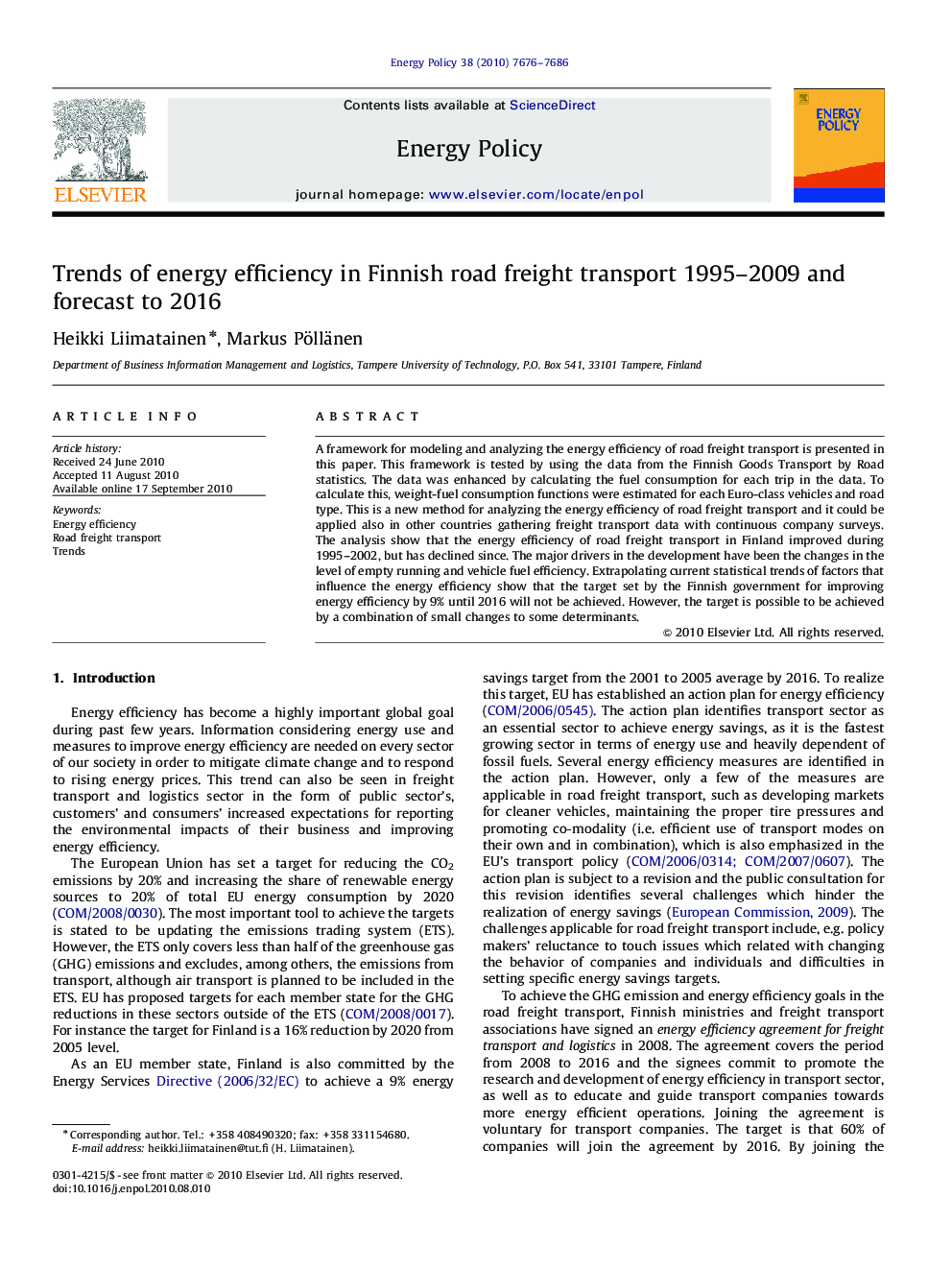| Article ID | Journal | Published Year | Pages | File Type |
|---|---|---|---|---|
| 996187 | Energy Policy | 2010 | 11 Pages |
A framework for modeling and analyzing the energy efficiency of road freight transport is presented in this paper. This framework is tested by using the data from the Finnish Goods Transport by Road statistics. The data was enhanced by calculating the fuel consumption for each trip in the data. To calculate this, weight-fuel consumption functions were estimated for each Euro-class vehicles and road type. This is a new method for analyzing the energy efficiency of road freight transport and it could be applied also in other countries gathering freight transport data with continuous company surveys. The analysis show that the energy efficiency of road freight transport in Finland improved during 1995–2002, but has declined since. The major drivers in the development have been the changes in the level of empty running and vehicle fuel efficiency. Extrapolating current statistical trends of factors that influence the energy efficiency show that the target set by the Finnish government for improving energy efficiency by 9% until 2016 will not be achieved. However, the target is possible to be achieved by a combination of small changes to some determinants.
Research highlights►A new method for analyzing energy efficiency by adding fuel data to national freight statistics. ►Energy efficiency improved in Finland from 1995 to 2002 but has declined since. ►Energy efficiency in Finland is still on a good level internationally. ►Target of the Finnish energy efficiency agreement was quantified for the first time in this study. ►The target will not be achieved if the past trends continue.
